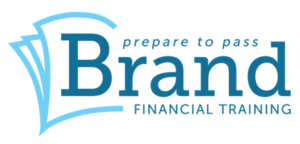In this month’s Brand Financial Training’s monthly article for Professional Paraplanner, the team consider the role of active fund management and the various fund manager styles prevalent in the industry
Fund managers use various different styles, each with distinct strategies and risk profiles; understanding these can help advisers choose the correct approach for their clients based on their objectives and own risk tolerance.
The first decision for the advisers/client however may be whether to use an active fund or a passive fund.
An actively managed fund involves the fund manager deciding on which underlying investments their fund is going to invest in based on their own research and analysis. This will mean initially complying with the rules laid down in the fund description so will depend on whether it’s a UK fund or an overseas fund, a fixed interest fund or something different.
Decisions will then need to be made on exactly where they are going to invest which can change regularly depending on individual performance. The charges for an active fund are always going to be higher than those funds that are managed passively.
An active fund manager’s aim is to try and ensure that their fund performs better than a particular benchmark. For example, a UK equity fund may be benchmarked against the performance of the FTSE All-Share. Managers will do this by attempting to predict the movement of markets and also by selecting individual companies they believe may be undervalued or have strong growth potential.
Features include:
- Potential for outperformance and underperformance compared to the index.
- Flexibility of where to invest.
- Higher annual management charges.
- Performance is based on the fund manager’s skill as well as market conditions.
Passive Management
A passive fund manager is not making any ‘active management’ decisions as they are simply attempting to replicate the performance of a particular index.
Funds can either fully replicate the index they are tracking or partially replicate. A FTSE 100 tracker fund that uses full replication, would invest in all of the 100 companies that are within that index in the same proportions; for example if the largest company in the FTSE 100 made up of 10% of the total value of the index, the fund manager would have 10% of the fund’s value in the same company.
Features include:
- They do well when markets are rising but will fall in line with markets also.
- The index may be dominated by a few large companies so diversification may be limited compared to an active fund.
- They are generally less expensive than active funds.
- Simple and easy to understand.
Active Fund Manager Styles
Growth investing looks for companies expected to grow at an above-average rate compared to the rest in their sector or market. Managers will be looking for companies with strong earnings potential or other expansion opportunities.
Value investing identifies undervalued stocks believed to be trading for less than their value. Investors seek companies with solid fundamentals, low price-to-earnings ratios, and a history of stability. This style of investment is often associated with lower risk but can involve long holding periods.
Income investing emphasizes generating regular income through dividends or interest rather than focusing solely on capital appreciation. This style is popular among retired people or those looking for cash flow.
Contrarian investing is an aggressive approach and involves going against the grain, often buying or selling certain stocks when others are doing the opposite. This approach is similar to value investing as both approaches look for opportunities that have been overlooked or underpriced.
Momentum investing aims to make returns based on existing market trends, by buying securities with good performance over a period of time and selling those that have performed poorly.
In conclusion, every fund management style has its different features making it crucial for advisers to align their clients’ choice with their goals, time horizon and risk profile.
About Brand Financial Training
Brand Financial Training provides a variety of immediately accessible free and paid learning resources to help candidates pass their CII exams. Their resource range ensures there is something that suits every style of learning including mock papers, calculation workbooks, videos, audio masterclasses, study notes and more. Visit Brand Financial Training at https://brandft.co.uk
Main image: stil-sHGyGynyD5Y-unsplash





























